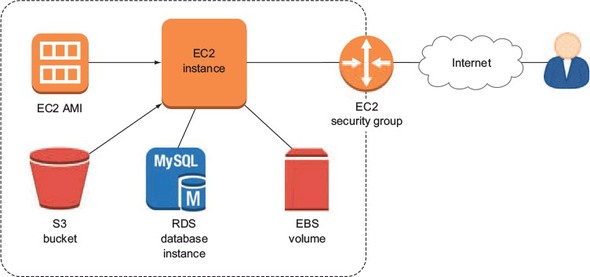chapter thirteen
Chapter 13. Keeping ahead of user demand
This is a bit of a transition chapter. Chapter 12 completed our survey of AWS’s core deployment services. That means you’re now familiar with the following:
- EC2 instances, Amazon Machine Images (AMIs), and the peripheral tools that support their deployment, such as security groups and EBS volumes
- Incorporating databases into applications, both on-instance and through the managed RDS service
- Using S3 buckets to deliver media files through your EC2 applications and for server backup storage
- Controlling access to your AWS resources with Identity and Access Management (IAM)
- Managing growing resource sets by intelligently applying tags
- Accessing resources using either the browser interface or the AWS command-line interface (CLI)
All of these things are represented in the schematic shown in figure 13.1. That alone would easily justify the time and energy you’ve invested in this book. Now we’re going to shift our focus and explore some best practices for application optimization.
